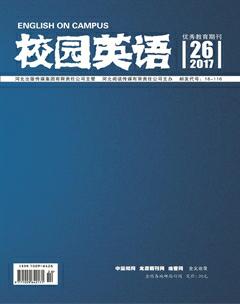A Review of Second Language Classrooms: Research on Teaching and Learning
This is an extraordinary book with comprehensive discussion of classroom-centered research in second language learning. It mainly reviews classroom research and attempts to provide confirming or disconfirming evidence for claims about the influence of language instruction and classroom interaction on language learning. Its purpose is reached through comparing studies that describe teachers and learners behaviors in classrooms and then synthesizing them into generalizations about the processes that take place in second language classrooms. Therefore, it is particularly useful for classroom teachers, and language researchers for their pursuit of language teaching and further research goals.
This book consists of 7 chapters:(1) major issues in second language classroom research, (2) classroom research methods, (3) teacher talk in second language classrooms, (4) learner behaviors, (5) teacher and student interaction, (6) learning outcomes, (7) directions for research and teaching. Undoubtedly, there are both merits and demerits in this book. And most of its demerits are caused by objective factors, e.g., a book of this size and at that time cannot deal with all the important research on classroom interaction in education in general. In the following part, the problems in the second, fourth, and the fifth chapter will be talked about.
The second chapter provides the readers with a comprehensive introduction of classroom research methods from two aspects:four traditions in research and four general methodological issues. The problem is that only the general issues like dimensions of analysis, and general approaches are described; while just a few specific methods are mentioned as examples vaguely, which is not so practical. Compared to the writing way of this book, I prefer Nunans (Nunan, 1992). In his book, there is a comprehensive description of every method, and they are marked and classified logically. It really helps readers develop a range of research skills.
The fourth chapter is composed of three parts:language production, input generation, and interaction between learners. And the question comes from the second part:The title of this part is “input generation”, and the whole part talks about learners initiatives in interaction, so can it be inferred that input generation is equal to learners initiatives? If the answer is yes, what are the criteria for researchers to identify learners initiatives? How can we tell the initiative from common language production and interaction between learners? According to the studies he reviews in this part, only the measures of “hand-raising” and “student-teacher questioning” are explicit input-generating actions (Naiman et al., 1978). This kind of finding is limited because in teacher-student questioning, there also can be learners initiative, for example, when the student turn includes “introducing something new or disputing a proposition in a previous turn” (Ellis, 2008).endprint
In the fifth chapter, several factors that have been considered to influence the quality and quantity of teacher-student interaction are examined. In the feedback part, there are two subtitles under it:“feedback as a factor in learning theory” and “feedback as error correction”. From this kind of arrangement, it can be easily inferred that learning theory and error correction are at the same level. But apparently, it is not. According to the author, learning theory tended to equate feedback with positive or negative reinforcement. Since error correction is one kind of reinforcement, why does the author put these two items equally? This kind of arrangement is relatively illogic.
In general, this book is satisfying to read, it can help readers get a comprehensive understanding of the principal variables in second language classroom learning and teaching and also the relationships among them. Furthermore, those readers might be inspired to initiate research so as to fill in the gaps that have not been filled yet.
References:
[1]Chaudron,C.(1988).Second language classrooms:Research on teaching and learning.Cambridge:Cambridge University Press.
[2]Ellis,R.(2013).The study of second language acquisition(2nd ed.).Shanghai:Shanghai Foreign Language Education Press.
[3]Naiman,N.,&Maria Fr?hlich,H.H.S.,&Angie,T.(1978).The good language learner.Toronto:Ontario Institute for Studies in Education.
[4]Nunan,D.(1992).Research methods in language learning.Cambridge:Cambridge University Press.
作者簡介:田晓(1993.6.12-),女,汉族,山西太原阳曲县人,现就读于西安外国语大学英文学院2016级外国语言学及应用语言学专业,主要研究方向:二语习得。endprint
——第二届中国空间科学大会在山西太原举行

